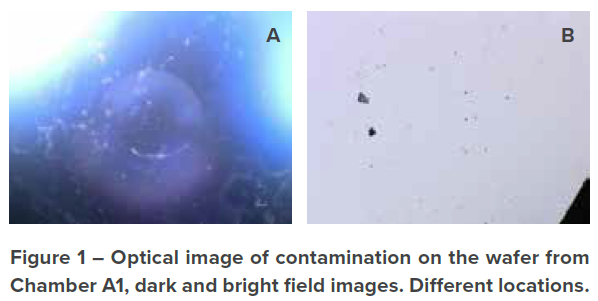How Clean is Your Reliability Chamber?
Home » How Clean is Your Reliability Chamber?
Stress testing of electronic devices and systems under specific heat and humidity conditions is required by industry, government and military organizations. These tests are typically performed in environmental chambers, where the temperature and relative humidity can be easily controlled and varied.2 One concern in this type of testing is the potential incidental contamination of valuable devices by a poorly maintained or poorly cleaned chamber itself.
There are several reasons why test chamber cleanliness is of great importance. Contaminants could inhibit desired electrical connections or facilitate electrical conduction where it is not desired, as well as obscure optical pathways and lead to esthetic degradation of samples. These degrading changes are beyond those that the elevated temperature and humidity are designed to induce.
For example, organic and/or inorganic materials that are non-conductive could coat the surface of the device during the test.
This could interfere with the electrical testing of the device resulting in perceived failures unrelated to the temperature/ humidity stress test. Furthermore, this contaminant could be transferred onto the socket or probes used by ATE (automatic test equipment) and ultimately require the cleaning of that tool, which could significantly slow down the overall testing. This may also require the samples themselves to be cleaned and retested. Alternatively, if a conductive material is deposited onto certain parts, shorting and/or leakage paths could be generated, resulting in failures that are, again, unrelated to the actual reliability test. This may cause delays in qualifying the electronic device and require repeat testing. Thus, it is critical to understand what types of contaminants are released during damp heat, temperature cycling and other chamber-based testing.
In this paper, we determine the level of contamination in reliability stress chambers by placing a silicon witness wafer inside of the chamber to capture any foreign materials. A common damp heat reliability test (called “85/85”) is then performed where the chamber is heated to 85 °C with a relative humidity of 85% for 1000 hours. To obtain a representative sampling of different chamber environments, we evaluate five different chambers from three laboratories labeled A, B and C. A control wafer is also examined, which is not exposed to the chamber conditions but instead kept in a plastic wafer carrier for the same duration of 1000 hours.
Following the damp heat test, the surface of the wafers is analyzed by X-ray photoelectron spectroscopy (XPS) and Fourier transform infrared spectroscopy (FTIR). Both techniques provide chemical bonding information, but the former uses vibrational spectroscopy to determine the molecular structure, whereas the latter uses X-rays to identify elements and functional groups based on their binding energies. The two techniques also vary in their sampling depth: XPS probes the top 5-10 nm of a surface, whereas FTIR generally provides information about the entire thickness of the contaminant (bulk analysis). Finally, there is a notable difference in the sensitivity of the two techniques: FTIR can only detect species present at 5-20 wt%, whereas XPS is more sensitive can detect trace elements at ~0.1-1 wt%. Together, the two techniques can be used in combination to understand the surface composition.
The insight into the composition of contaminants provided by this paper can be used to develop and optimize cleaning processes for these chambers. We also demonstrate the effectiveness of using a witness wafer to determine the cleanliness of reliability chambers.
Would you like to learn more about How Clean is Your Reliability Chamber?
Contact us today for your Reliability Chamber cleanliness needs. Please complete the form below to have an EAG expert contact you.
